Exploring Stem Cell Innovations for Nerve Repair
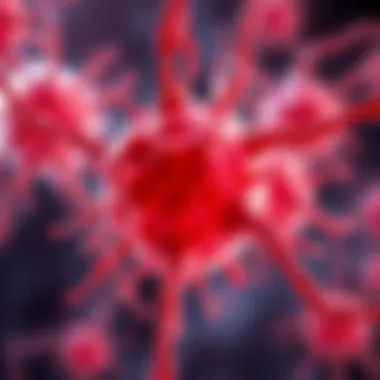
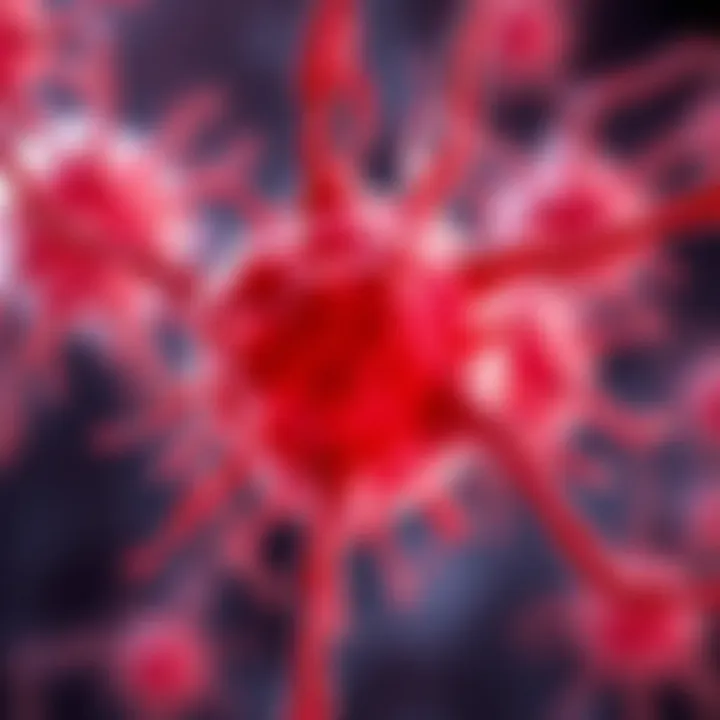
Intro
The growing interest in stem cell applications for nerve regeneration has generated a buzz in the medical community, and rightly so. Recent advancements reveal promising avenues for treating nerve injuries, something that has puzzled researchers for decades. Rather than relying solely on traditional methods, stem cells offer a fresh perspective, aiming to restore functionality in damaged nerve tissues.
This article aims to unpack the various methodologies currently in use, assess their effectiveness, and explore both the challenges and potential future directions in this rapidly evolving field. As we delve into the specifics, it becomes clear that understanding the underlying biological mechanisms is key to unlocking the full potential of stem cell technology in nerve repair.
Methodology
Study Design
To assess the efficacy of stem cells in nerve regeneration, a multi-faceted study design is often employed. Researchers commonly use a combination of in vitro experiments, animal models, and, increasingly, clinical trials involving human participants. This pyramid approach allows for the validation of findings across different levels of biological complexity.
- In vitro Studies: In lab settings, scientists manipulate stem cells to observe their behavior, differentiation, and interaction with other cell types. This initial step lays the groundwork for further exploration.
- Animal Models: Following successful lab results, studies on rodents or larger mammals help simulate human physiological conditions. These models provide critical insights into how stem cell therapies might perform in real-world scenarios.
- Clinical Trials: Finally, human trials test the safety and efficacy of stem cell applications. These studies are crucial to validate preclinical findings and to ensure that the treatments are both effective and safe for human use.
Data Collection Techniques
Data collection in this field involves a blend of qualitative and quantitative methods, ensuring a holistic understanding of stem cell behavior and outcomes in nerve regeneration. Key techniques include:
- Cell Proliferation Assays: These assays quantify the growth rate of stem cells under various conditions, crucial for determining optimal growth media.
- Imaging Techniques: High-resolution imaging, like MRI or CT scans in animal models, helps track the progression of nerve repair visually.
- Histological Staining: This method allows scientists to observe cellular morphology and tissue organization post-therapy, offering insights into the success of intervention.
- Patient Surveys and Quality of Life Assessments: In clinical settings, questionnaires become essential for gauging patient experiences and functional improvements post-treatment.
Through these methodologies, researchers can draw stronger conclusions about the effectiveness of stem cell treatments, paving the way for further innovations in nerve repair.
Discussion
Interpretation of Results
As studies progress, the initial findings reveal both promise and caution. Many have demonstrated that stem cells can indeed promote nerve regeneration, improve functional recovery, and enhance the healing process. However, the extent of recovery often varies widely based on individual conditions.
Limitations of the Study
Despite the enthusiasm, a number of limitations persist in current research:
- Variability Among Studies: Different methodologies can lead to inconsistent results, making it challenging to establish clear guidelines for clinical application.
- Ethical Concerns: The sourcing of stem cells, particularly embryonic stem cells, may invoke ethical debates that delay research progress.
- Long-Term Effects: The long-term impact of stem cell treatments is still uncertain, with more data needed to ensure their safety and effectiveness over extended periods.
Future Research Directions
Looking forward, the landscape of nerve regeneration via stem cells is likely to evolve significantly. Key areas that require further exploration include:
- Personalized Medicine: Advancing techniques to tailor stem cell therapies to individual patients could lead to more effective outcomes.
- Combination Therapies: Blending stem cell treatments with growth factors or other regenerative approaches might enhance repair mechanisms.
- Bioengineering: Advances in biomaterials may facilitate better integration of stem cells into damaged tissues, improving surgical outcomes.
Prelims to Nerve Regeneration
Nerve regeneration is a vital topic in the field of biomedical research, capturing the interest of scientists and medical professionals alike. When nerves are injured, whether through trauma, disease, or degeneration, they often do not heal effectively, leading to long-lasting disability. Understanding the mechanisms of nerve regeneration is crucial not only for patients but also for advancing treatments that can restore sensory and motor functions.
Significance of Nerve Regeneration
The significance of nerve regeneration cannot be overstated. Peripheral nervous system injuries can lead to severe consequences, such as loss of sensation, weakness, or paralysis. The ability to regenerate damaged nerves effectively means more than just physical healing; it also influences the patient’s quality of life. Research indicates that successful nerve regeneration can reduce the economic burden on healthcare systems while boosting the overall morale of patients who regain their functional abilities. For instance, a study published in The Journal of Neurotrauma demonstrates how enhanced nerve regeneration can improve recovery rates among patients with traumatic injuries.
The evolving understanding of nerve regeneration holds promise for a range of conditions, including spinal cord injuries and neurodegenerative diseases. With a growing emphasis on regenerative strategies, the field has witnessed innovations like nerve grafting and the utilization of biomaterials. This increasing spotlight on nerve repair signals that there is a tangible hope for better treatment protocols in the near future.
Mechanisms of Nerve Damage
To appreciate how nerve regeneration can be achieved, one first needs to grasp the various mechanisms that underpin nerve damage. When nerves are injured, a cascade of cellular and molecular events occurs. For one, the initial trauma can cause axonal disruption, leading to a loss of communication between neurons and their target tissues. Alongside axonal damage, inflammation plays a significant role. After an injury, inflammatory cells invade the area, and while their primary role is to clear away debris and promote healing, excessive inflammation can hinder effective repair.
Additionally, the microenvironment around the damaged nerve influences regeneration rates. Factors such as lack of growth factors or an unfavorable extracellular matrix can create hurdles for regenerating nerves to reconnect. These insights into the mechanistic layers of nerve damage provide a foundation for developing therapies aimed at fostering regeneration.
In summary, the journey through nerve regeneration is multifaceted, requiring an understanding of both the significance and underlying mechanisms of nerve damage. As researchers delve deeper into these realms, the implications for treatment strategies become clearer, paving the way for innovations that can significantly alter patient outcomes. This foundational knowledge is imperative as we explore the role of stem cells in nerve regeneration and how they offer potential pathways for improved healing processes.
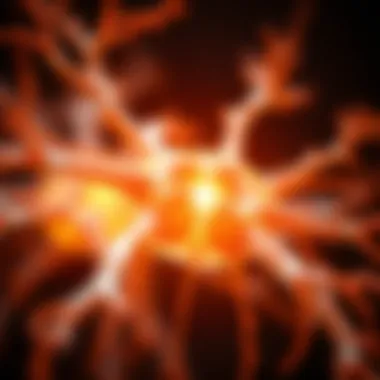
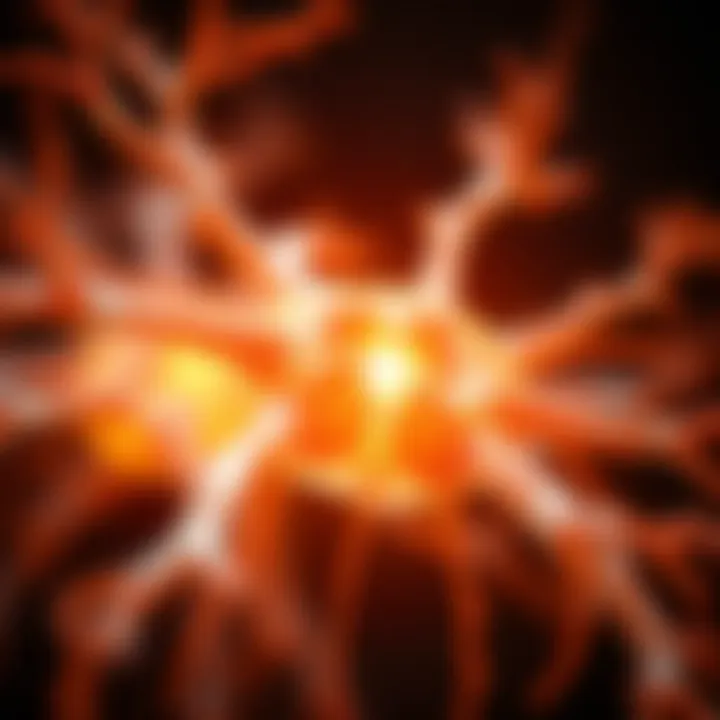
Understanding Stem Cells
When delving into the fascinating world of nerve regeneration, grasping the concept of stem cells becomes pivotal. These unique cells not only have the power to self-renew but also possess the capability to differentiate into various cell types, making them essential players in the body’s repair mechanisms. Understanding stem cells fuels the ongoing conversation about their applications, particularly in nerve repair, inviting researchers to explore potential therapies for neurodegenerative diseases and traumatic injuries.
Types of Stem Cells
To comprehend the nuances of stem cell therapy for nerve regeneration, it's crucial to identify and differentiate the main types of stem cells commonly discussed in research.
Embryonic Stem Cells
Embryonic stem cells (ESCs) are derived from early-stage embryos, highlighting their remarkable capacity for differentiation into any cell type. This unique attribute makes them a sought-after tool in regenerative medicine. One prominent characteristic of ESCs is their pluripotency; they can become virtually any cell type, which positions them as a valuable asset in nerve repair. However, the ethical concerns surrounding the use of embryos cannot be overlooked. While their potential to treat neurological damage is vast, such applications often spark debates about morality and sourcing.
In essence, ESCs stand out due to their broad applicability in research and treatment. Their ability to produce various neuron types offers pathways to develop precise cellular therapies for conditions like spinal cord injuries and other neurological disorders.
Adult Stem Cells
In contrast, adult stem cells (ASCs), which reside in specific tissues throughout the body, serve as a prime example of the body’s innate repair mechanisms. These cells are multipotent, which means they can differentiate into a limited range of cell types related to their tissue of origin. For instance, neural stem cells sourced from the brain can differentiate primarily into neurons and glial cells. A key feature of ASCs is that they can be harvested from a patient’s own body, minimizing ethical issues and reducing the risk of rejection during therapeutic applications.
Nonetheless, their differentiation potential is more restricted than that of ESCs, impacting their scope of application. While ASCs can contribute to nerve regeneration, their recovery and activation during treatment may depend heavily on the conditions of the surrounding microenvironment.
Induced Pluripotent Stem Cells
Induced pluripotent stem cells (iPSCs) have emerged as a groundbreaking advancement in stem cell research. By reprogramming somatic cells (like skin cells) into an embryonic-like state, researchers have discovered a way to bypass some ethical dilemmas associated with ESCs. Their key characteristic lies in their ability to differentiate into nearly any cell type, similar to ESCs. Because they can be derived from a patient’s cells, iPSCs hold significant promise for personalized medicine, enabling the potential creation of patient-specific cells for nerve repair.
Yet, while the benefits are numerous, challenges remain, particularly concerning the potential for tumorigenesis linked to iPSCs. As research progresses, addressing these hurdles will be essential for unlocking their full therapeutic capabilities.
Stem Cell Differentiation
Stem cell differentiation is a critical aspect of harnessing their potential in nerve regeneration. This process involves the transformation of stem cells into specific cell types necessary for repair, which is influenced by various internal and external factors. Adequate understanding and manipulation of differentiation pathways may enhance the effectiveness of stem cell therapies, ultimately leading to more viable options for treating neural injuries and diseases.
Stem Cell Mechanisms in Nerve Repair
The application of stem cells in nerve repair is becoming increasingly significant as researchers continue to unlock the mechanisms through which these cells can aid in recovery and regeneration. Understanding these mechanisms is critical for developing effective treatments for nerve injuries and related diseases. The plasticity of stem cells, meaning their ability to differentiate into various cell types, positions them as a promising candidate in the intricate process of nerve regeneration.
Cell Replacement Theory
Cell Replacement Theory focuses on the idea that stem cells can directly replace damaged or lost nerve cells. The concept posits that after an injury, a cohort of stem cells can migrate to the site of damage and differentiate into neurons or glial cells, thereby restoring function. This theory is underpinned by a few key components, including:
- Proliferation: Stem cells must first multiply to create sufficient numbers of cells to replace those lost to injury.
- Differentiation: The stem cells need to transform into the appropriate cell type—neurons or glial cells—to ensure successful nerve function.
- Integration: Once the stem cells have differentiated, they must integrate into the existing neural network, forming functional connections with other neurons.
Recent studies indicate that transplanted stem cells can indeed differentiate into neuronal cells and repair damaged nerve pathways. This supports the notion that stem cells could form the basis of innovative treatments for conditions such as spinal cord injuries and peripheral nerve damage. Moreover, advancements in gene editing technologies, like CRISPR, have shown promise in enhancing the potential of the cell replacement model by creating cells with optimized properties for nerve repair.
Regulatory Factors in Nerve Regeneration
In the realm of stem cell applications for nerve repair, regulatory factors play a pivotal role in driving successful regeneration. These factors include various signaling molecules and environmental cues that guide stem cell behavior. Understanding these regulatory mechanisms is crucial for advancing therapeutic strategies. Some of the factors guiding nerve regeneration are:
- Neurotrophic Factors: Proteins like Nerve Growth Factor (NGF) and Brain-Derived Neurotrophic Factor (BDNF) significantly influence survival, differentiation, and function of neurons. They serve as essential signals in the context of nerve repair.
- Extracellular Matrix (ECM): This complex network provides structural support to the cells and influences behavior. The composition of ECM can greatly affect stem cell fate, guiding them toward differentiation and influencing their integration into the existing neural architecture.
- Inflammatory Response: Following a nerve injury, the body’s inflammatory response can be both a friend and foe. While certain inflammatory mediators can enhance repair, excessive inflammation may hinder stem cell function and neurite outgrowth. Balancing inflammatory responses is essential for successful regeneration.
In summary, the interplay between stem cell behavior and the aforementioned regulatory factors is intricate and not fully understood. However, the progress in identifying and manipulating these factors could significantly enhance stem cell therapies, leading to breakthroughs in nerve regeneration approaches.
Stem cell mechanisms are essential to developing innovative treatments for nerve degeneration and injury, potentially transforming rehabilitation strategies.
For further reading on this subject, check out National Institute of Neurological Disorders and Stroke, which provides insights into the latest research on nerve regeneration and stem cell therapies.
Model Systems for Studying Nerve Regeneration
Understanding how stem cells can aid in nerve regeneration is a crucial area of research that offers profound implications for the treatment of neurological injuries and diseases. Researchers rely heavily on dedicated model systems to test theories, explore cellular behaviors, and gauge the impacts of various therapies. These model systems not only advance scientific knowledge but also help to refine methodologies for potential clinical applications.
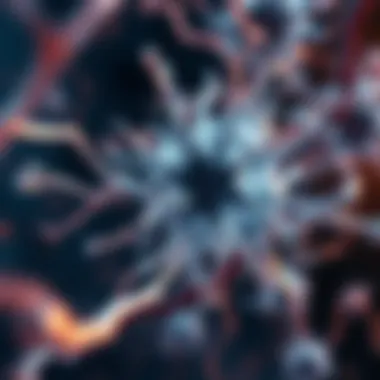

The significance of model systems lies in their ability to mimic the complexities of human physiology. By selecting appropriate models, researchers can investigate the intricacies involved in nerve repair and regeneration processes. Here, we consider both animal models and in vitro studies as two primary approaches that form the backbone of current research.
Animal Models
Animal models have long played a pivotal role in biomedical research, offering insights that are challenging to obtain through other means. For nerve regeneration, these models provide a living organism in which the complexity of cellular interactions can be observed in real time. Commonly used animal models include rodents, guinea pigs, and larger species such as pigs or primates. Each serves its own unique purpose depending on the scale and type of study.
While rodents are often the first choice due to their manageable size and short life cycles, they also come with limitations. The morphology of rodent nerves differs from that of humans, which can lead to discrepancies between observed outcomes and potential human applications. Nonetheless, their genetic similarity to humans and extensive prior research offers a significant amount of data that can be exploited in experiments.
Key considerations when using animal models include:
- Species Variation: Different species can exhibit variations in nerve structure and repair mechanisms.
- Ethical Implications: The welfare of animal subjects must always be paramount, promoting humane care and usage.
- Translatability to Humans: Results must be carefully analyzed to determine their relevance to human conditions.
"Choosing the right model is like finding the right key to a locked door; it opens avenues to understanding that might otherwise remain hidden."
In Vitro Studies
In contrast to animal models, in vitro studies involve examining cells in a controlled environment, typically within a dish or a bioreactor. This allows for targeted experimentation without the confounding factors inherent in living organisms. Cell cultures can be derived from various sources, such as adult stem cells, embryonic stem cells, or even specific nerve tissue, depending on the goals of the research.
In vitro studies come with several advantages:
- Control Over Environment: Conditions can be manipulated with precision, allowing for detailed investigations into specific variables that influence nerve regeneration.
- Cost-Effective: These studies generally require fewer resources than animal-based research and can be conducted more quickly.
- High Throughput Screening: They facilitate large scale experiments to assess how different treatments affect cellular behaviors, accelerating the pace of discovery.
However, there are notable limitations, including a lack of systemic interaction and the inability to fully replicate the complexity of an organism. The results obtained from in vitro studies must be treated cautiously and often require validation from animal studies or clinical research to ascertain their relevance to whole organisms.
As research progresses, the refinement and development of these model systems will continue to be critical in achieving breakthroughs in nerve regeneration.
Current Applications of Stem Cells in Nerve Regeneration
The realm of nerve regeneration is undergoing a remarkable transformation, and stem cells are at the heart of this revolution. These applications are significant not just in a theoretical sense, but they offer tangible hope for patients suffering from nerve damage. With the potential to restore function lost through injury or disease, stem cell technologies could unveil new therapeutic strategies that have previously lingered in the shadows of research.
Clinical Trials
Clinical trials represent a critical step in translating experimental treatments into real-world applications. They provide the framework within which the safety and efficacy of stem cell therapies can be rigorously evaluated. In recent years, a number of clinical trials have emerged focusing on the use of stem cells for nerve regeneration. These trials often investigate various sources of stem cells, such as bone marrow-derived mesenchymal stem cells or neural stem cells grown in vitro.
A standout example is the trial undertaken at the University of Miami, which explored the administration of stem cells combined with growth factors aimed at enhancing nerve regeneration post-surgery. The results indicate not only a decrease in recovery time but also an increase in the functional outcomes in participants. Moreover, as findings from these trials accumulate, they serve to progress the collective understanding of how stem cells interact with nerve tissues and promote healing.
**"Clinical trials are the bridge between lab research and patient care, offering critical insights for advancing treatments."
Therapeutic Strategies
Cell Therapy
Cell therapy involves transplanting stem cells into damaged nerve tissues with the goal of promoting repair and restoring function. This strategy harnesses the innate ability of stem cells to differentiate into various cell types that are essential for nerve healing. The key characteristic that makes cell therapy particularly compelling is the capacity to potentially replace damaged or dead cells. This is important in contexts where nerve injuries lead to irreversible damage.
One unique feature of cell therapy is its adaptability: it can utilize various stem cell types, such as autologous stem cells, which are derived from the patient themselves. This aspect significantly lowers the risk of immune rejection, making it an appealing option. However, the disadvantages include potential complications related to cell sourcing and the complexity of the transplantation procedure, which can sometimes lead to inconsistent outcomes.
Gene Therapy
Gene therapy, on the other hand, takes a different route by focusing on altering the genetic makeup of cells to promote regeneration. This method holds the promise of enhancing the natural healing events following a nerve injury. By introducing genes that encode growth factors or neuroprotective agents directly into target cells, gene therapy can potentiate regenerative processes effectively.
A key characteristic of gene therapy is its long-lasting impact, as the modified cells can continue to express therapeutic proteins long after the initial treatment. It offers a significant advantage, particularly in chronic conditions where traditional therapies may fall short, although challenges remain. These include the need for precise delivery mechanisms and addressing the potential for unintended genetic changes. The balance between efficacy and safety is a pivotal consideration that researchers are continuously grappling with.
Challenges in Stem Cell Research
The journey toward effective nerve regeneration using stem cell technology is fraught with challenges. Addressing these hurdles is crucial, as they can significantly impact the feasibility of translating lab breakthroughs into real-world applications. Key challenges can be thoughtfully divided into ethical considerations and technical barriers, both of which hold substantial weight in the field of regenerative medicine.
Ethical Considerations
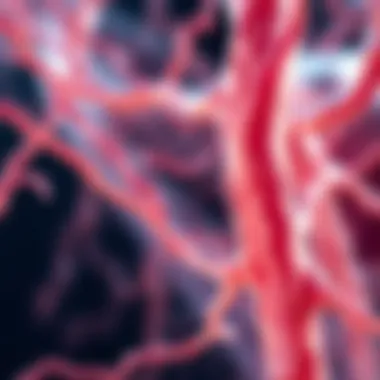
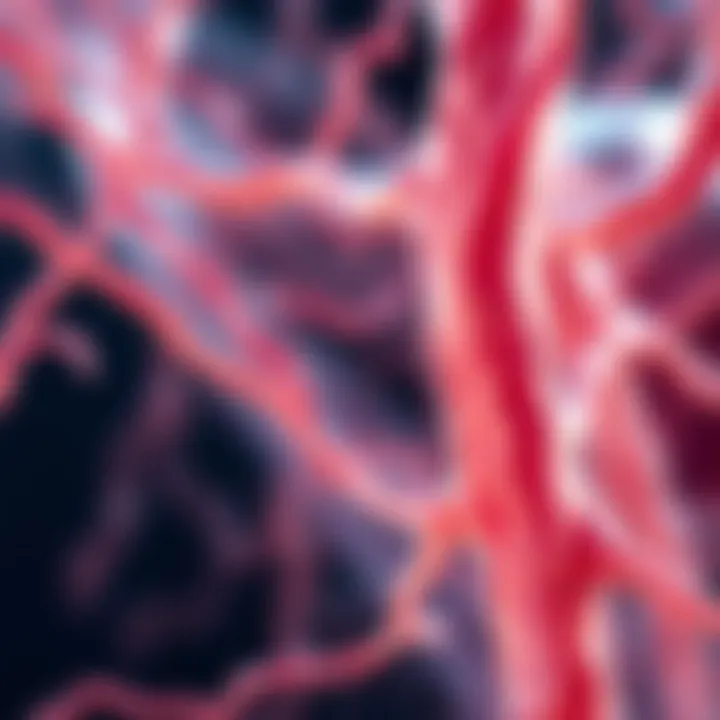
Ethics play a pivotal role in stem cell research, influencing how scientists and institutions approach experimentation and implementation. A major point of contention revolves around the source of stem cells, especially embryonic stem cells. While the potential for tissue and nerve repair is significant, sourcing these cells raises complex moral questions related to the use of human embryos. Many institutions set strict guidelines to ensure that ethical frameworks are adhered to, not only to maintain public trust but also to uphold the integrity of scientific inquiry.
Moreover, the informed consent of donors, especially in the case of induced pluripotent stem cells, presents another ethical layer. The donors must be made fully aware of how their cells may be used in research or clinical settings, which necessitates transparency and a commitment to ethical practices.
It's also essential to recognize that any advancements or publications must consider societal implications. As stem cell therapies progress, there's a duty to educate the public about their benefits and risks. Balancing the promotion of scientific progress with social responsibility is a tightrope that researchers must walk meticulously.
"Navigating the ethics of stem cell research is like sailing through treacherous waters; one must be cautious to avoid pitfalls that could undermine progress."
Technical Barriers
While ethical considerations often dominate discussions around stem cell research, the technical challenges cannot be overlooked. Various issues stem from the complex nature of nerve tissue and the body’s own responses to such therapies.
One crucial hurdle is the difficulty in differentiating stem cells into specific cell types needed for nerve regeneration. Achieving precise control over the differentiation process is complex. Researchers have made strides, yet refining these techniques remains a work in progress.
Another technical challenge involves the immune response. Stem cell therapies can sometimes trigger an immune reaction, resulting in rejection of the introduced cells. Developing immunosuppressive protocols to mitigate this response is essential, yet it poses additional risks that must be carefully managed.
Finally, the scalability of stem cell production is a significant concern. While small-scale studies and trials show promise, translating these findings into practical, large-scale treatment options poses logistical challenges. From sourcing the stem cells to ensuring consistent quality control, these technical barriers can stymie the progress of bringing therapies to patients.
Future Directions in Nerve Regeneration Research
As we explore the complex landscape of nerve regeneration, it becomes increasingly important to consider future directions in research. This focus on upcoming methodologies and tools is vital for advancing treatments and improving patient outcomes. The dynamic nature of stem cell technology shows promising avenues that could redefine our understanding of neural repair.
The impact of innovative approaches cannot be overstated. They encompass everything from enhancing cell survival post-transplantation, developing biomaterials that mimic the native extracellular matrix, to leveraging cutting-edge gene editing techniques. The convergence of multiple disciplines reflects a multidisciplinary approach which is essential for making significant strides in nerve regeneration.
Innovative Approaches
Among the most exciting new strategies in nerve regeneration is the use of 3D bioprinting. This technology allows for the precise construction of nerve grafts tailored to patient-specific needs. By layering biomaterials with cells, researchers can create scaffolds that replicate native structures, providing a conducive environment for nerve cells to grow and reorganize. Studies have shown that such grafts not only support cell alignment but also promote axonal extension, critical for functional recovery.
Another noteworthy development is the application of neurotrophic factors in conjunction with stem cells. These proteins are naturally occurring in the body, playing crucial roles in the survival and growth of neurons. By combining stem cell therapy with localized delivery of neurotrophic factors, scientists aim to enhance the efficacy of nerve repair processes. They can stimulate differentiation and maturation, thus speeding up recovery.
Furthermore, advancements in gene therapy open new horizons. By modifying stem cells to express specific genes that promote growth, researchers hope to maximize regeneration. Engineering stem cells to secrete beneficial proteins can pave the way for improved healing scenarios, particularly in debilitating injuries where traditional therapies fall short.
Potential of Regenerative Medicine
Regenerative medicine embodies the future of healthcare, particularly in treating nerve injuries where recovery often stalls. The potential seems vast; effective strategies developed from current research could lead to remarkable breakthroughs in how we approach conditions like spinal cord injuries or neurodegenerative diseases. Stem cell applications in this field can shift paradigms—from merely managing symptoms to real restoration of functionality.
To grasp the full potential of regenerative medicine, investing in personalized therapies is crucial. Techniques tailored to individual genetic profiles can optimize treatment efficacy, reducing the risk of rejection or side effects. Such personalized approaches, combined with artificial intelligence predictive models, will facilitate the development of bespoke treatment plans that respond more effectively to patient needs.
Moreover, the combination of biomaterials that release stem cells and growth factors directly at injury sites reflects a tangible shift towards precision medicine. Engineering functional interfaces that not only reintroduce biological agents but also actively participate in the signaling processes could transform patient recovery rates.
"Nerve regeneration research takes us into uncharted territory, where the marriage of biology and technology opens possibilities previously thought out of reach."
Epilogue
The importance of nerve regeneration through stem cell applications cannot be understated. In navigating this complex landscape, the article has synthesized key findings that shed light on both the potential and the current limitations of stem cells in regenerating nerve tissue. This field stands at the confluence of biology, medicine, and engineering, opening doors to revolutionary treatment methods.
Summary of Key Points
To effectively capture the essence of this discussion, it’s vital to revisit several pivotal elements:
- Significance of Nerve Regeneration: Recognizing how nerve injuries can severely impact an individual’s quality of life, making this field of study not just scientific but deeply personal.
- Stem Cell Types: Delving into embryonic, adult, and induced pluripotent stem cells underscores the diversity in approaches.
- Mechanisms of Repair: The intricate biological processes involved in nerve repair showcase an interplay of cellular interactions and environmental factors.
- Innovative Approaches and Therapeutic Strategies: Highlighting treatment methodologies such as cell therapy and gene therapy demonstrates the active exploration of regenerative medicine.
- Challenges and Ethical Concerns: Addressing the ethical landscape and technical barriers offers a sobering perspective, ensuring responsible advancement in research.
These points collectively illustrate the multifaceted approach needed in both research and clinical applications.
Impact on Future Therapies
Looking ahead, the potential impact of stem cell applications on future therapies is profound. With ongoing research and clinical trials, there is a growing optimism that breakthroughs in this field will fundamentally change treatment paradigms. As scientists continue to unlock the secrets of stem cells and their regenerative properties, several considerations emerge:
- Tailored Treatments: The concept of personalized medicine can become a reality, where therapies are tailored to match individual patient profiles, especially in nerve injuries.
- Expanding Treatment Options: Stem cell therapy could provide new treatment avenues for conditions that previously had limited options, like spinal cord injuries or degenerative nerve diseases.
- Improving Recovery Outcomes: Advancements in regenerative techniques can lead to enhanced recovery rates, improving life quality for countless patients.
Moreover, as technical barriers are addressed and ethical concerns navigated, supporting policy frameworks will be crucial. As evidence mounts and methodologies refine, the conversation surrounding nerve regeneration from stem cells will evolve, transforming not only clinical practices but potentially entire communities.
"The journey of stem cells in nerve regeneration is akin to navigating uncharted waters—full of possibilities yet seasoned with caution."
Understanding this balance between promise and challenge is vital as we forge ahead in this remarkable domain.







